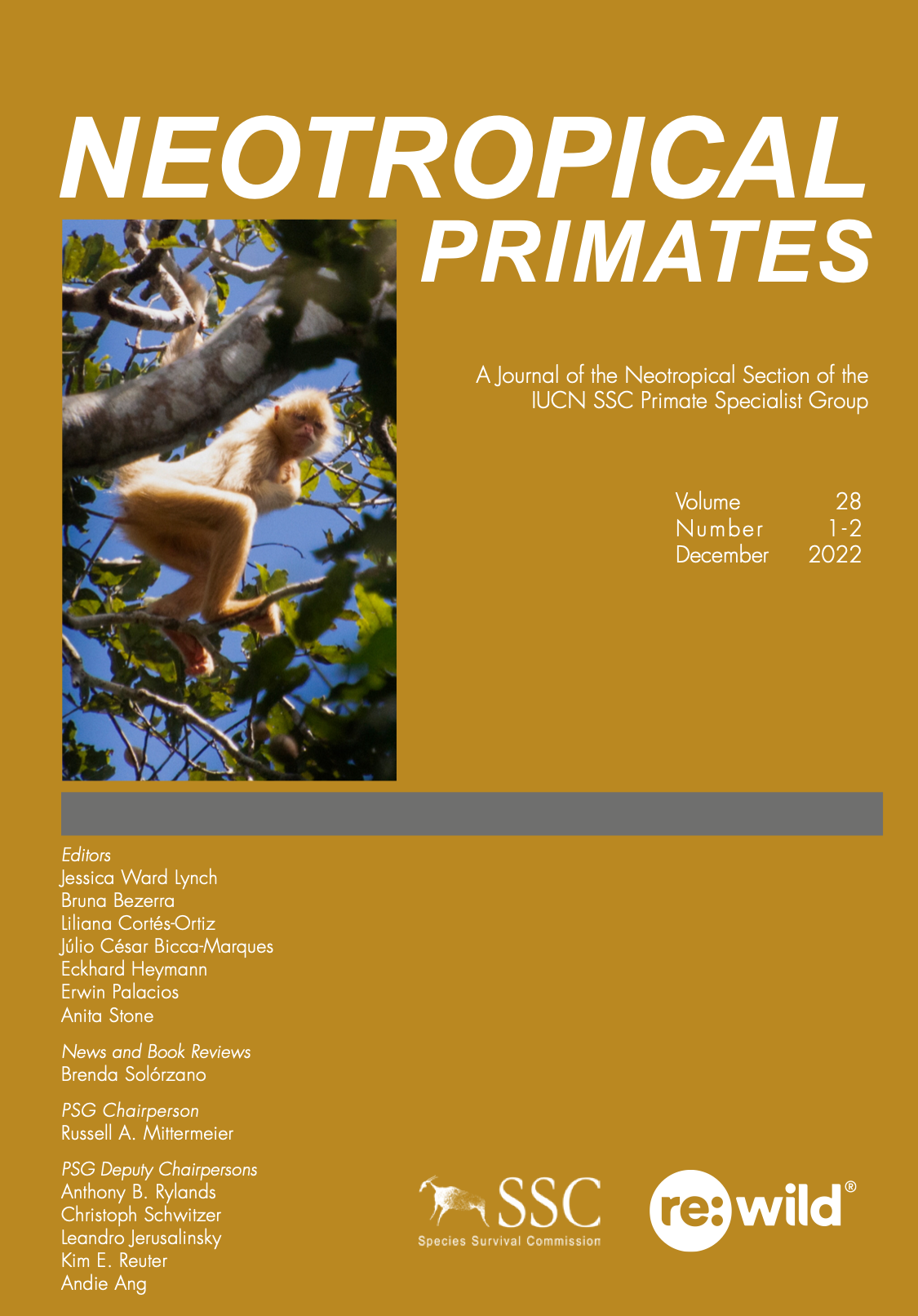European ex situ programmes for larger New World monkeys
DOI:
https://doi.org/10.62015/np.2022.v28.226Keywords:
captive breeding, zoos, EAZA, Larger New World Monkey TAG, conservationAbstract
Captive breeding programmes for primates can support the conservation of in situ populations of endangered species. European zoos, organised in the European Association of Zoos and Aquaria, keep almost 4000 larger Neotropical primates in their collections. Most of the species are managed in cooperative breeding programmes of various sizes. We report the current state of the European captive breeding programmes for these species and discuss the role assigned to each programme for the conservation of in situ primates. European zoos are successfully breeding most species currently kept under their care and are able to make an important contribution to the captive breeding of other, more endangered primate species, if requested by range countries. Many zoos that keep larger Neotropical primates provide financial or techni- cal support to in situ conservation projects.
References
Ballou, J.D., Lees, C., Faust, L.J., Long, S., Lynch, C., Bingaman Lackey, L. and Foose, T.J. 2010. Demographic and Genetic Management of Captive Populations. In: Wild Mammals in Captivity: Principles and Techniques for Zoo Management. 2nd ed., D. G. Kleiman, K. V. Thompson and C. Kirk Baer (eds.), pp.219–252. The University of Chicago Press, Chicago and London.
Bóveda-Penalba, A.J., Vermeer, J., Rodrigo. F. and Guer- ra-Vásquez, F. 2009. Preliminary report on the distribution of Callicebus oenanthe on the eastern feet of the Andes. Int. J. Primatol. 30(3): 467–480.
Byers, O., Lees, C., Wilcken, J. and Schwitzer, C. 2013. The One Plan Approach: the philosophy and implementation of CBSG’s approach to integrated species conservation planning. WAZA News Magazine 14: 2–5.
EAZA. 2022. EAZA population management manual: standards, procedures and guidelines for population management within EAZA. European Association of Zoos and Aquaria, Amsterdam, the Netherlands.
Hakeem, A., Sandoval, R. G., Jones, M. and Allman, J. 1996. Brain and life span in primates. In: Handbook of the Psychology of Aging, 4th edition. J. E. Birren and K. W. Schaie (eds.), pp.78–104. Academic Press, San Diego, USA.
Hoyos, M., Bloor, P., Defler, T.R., Vermeer, J., Röhe, F. and Pires Farias, I. 2016. Phylogenetic relationships within the Callicebus cupreus species group (Pitheciidae: Primates): biogeographic and taxonomic implications. Mol. Phylogenet. Evol. 102: 208–219.
IUCN/SSC. 2014. Guidelines on the use of ex situ management for species conservation. Version 2.0. IUCN Species Survival Commission, Gland, Switzerland.
Muñoz Lora, M. L., Gómez Cadenas, K., Falla Beltrán, A. C. and Soto Calderón, I. D. 2020. Trends in the use of studbooks in captive breeding programs of Neotropical primates. Neotrop. Primates 26(1): 30–40.
Ruiz-Garcia, M., Parra, A., Romero-Aleán, N., Esco- bar-Armel, P. and Shostell, J. M. 2006. Genetic characterization and phylogenetic relationships between the Ateles species (Atelidae, Primates) by means of DNA microsatellite markers and craniometric data. Primate Report 73: 3–47.
Thompson, C. L. 2016. To pair or not to pair: sources of social variability with white‐faced saki monkeys (Pithecia pithecia) as a case study. Am. J. Primatol. 78(5): 561–572.
Vermeer, J. and Shanee, S. 2020. Plecturocebus oenanthe. The IUCN Red List of Threatened Species 2020. Website: https://www.iucnredlist.org/species/3553/17975319. Accessed 31 December 2022.
Vermeer, J. 2017. Regional collection plan for the larger New World monkeys, 2nd edition. European Association of Zoos and Aquaria.

Published
Issue
Section
License

This work is licensed under a Creative Commons Attribution-NonCommercial-ShareAlike 4.0 International License.


